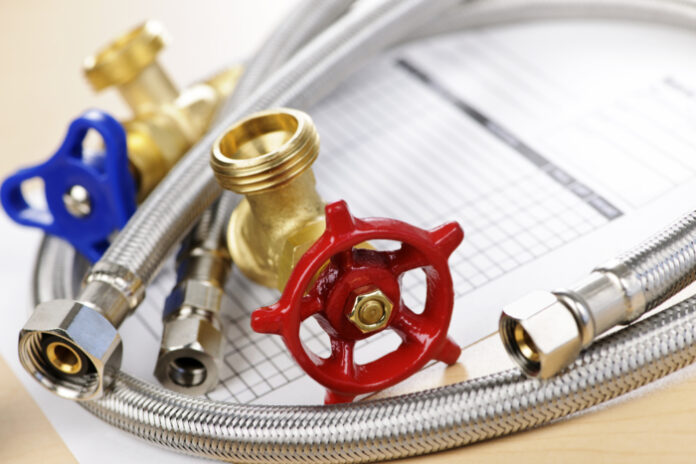Plumbing pipe fittings are the backbone of any plumbing system, responsible for sealing, directing, and regulating water flow within a home or business. The importance of choosing the best plumbing pipe fittings cannot be overstated. Plumbing system failure caused by substandard fittings can cause significant structural damage, costly repairs, and even health hazards. The right type, material, size, and quality of the plumbing pipe fittings determine the effectiveness, reliability, and sustainability of your plumbing system.
Knowing how to choose the right plumbing pipe fittings is crucial, as it ensures that your plumbing system performs optimally and is free from leaks and failures. Therefore, it is essential to note the essential factors to consider when selecting plumbing pipe fittings for your home or business. From the material of the pipe to the brand and quality of the fittings, each consideration plays a vital role in ensuring your plumbing system operates efficiently and effectively.
In this article, we provide an insightful guide that highlights the essential factors you need to consider when choosing the best plumbing pipe fittings.
Types of plumbing pipe fittings
Plumbing pipe fittings are available in many different types, but compression fittings, push-fit fittings, threaded fittings, and soldered fittings are the most common. Compression fittings involve a nut and ferrule that are used to compress the pipe against the fitting to create a leak-proof seal. Push-fit fittings are quick and easy to install and require no specialized tools. Threaded fittings involve screwing the pipes together, and soldered fittings require heating up the pipe and fitting and melting them together. Each fitting type has its pros and cons, depending on the application you have in mind. For example, threaded fittings can handle high-pressure applications, but they take longer to install. On the other hand, push-fit fittings are easy to install, but they may not be as durable as other fitting types. When selecting the best type of fitting, consider the pressure and temperature requirements, compatibility with the pipe material, and ease of installation. For additional options, many online retailers have Plastic Pipe & Fittings for sale, which can be an affordable and versatile option for some applications.
Material considerations
Choosing the right material for your plumbing pipe fittings is another critical factor to consider. There are several pipe materials available, including copper, PVC, steel, brass, and PEX. Copper pipes are a popular choice due to their durability, corrosion resistance, and great heat conductivity. PVC pipes are lightweight and affordable, making them ideal for household drain pipes and plumbing lines. Steel pipes are the most robust option for high-pressure applications and are commonly used in industrial settings. Brass pipes are corrosion-resistant and can be used for all kinds of fittings, from valves to couplers. PEX pipes offer excellent durability and ease of installation and are suitable for both hot and cold water applications. When selecting the right material, consideration should be given to the specific application and the material’s suitability for that use. Additionally, compatibility issues between different materials can cause system failures. Be sure to shop Copper Pipe Fittings for sale from reputable suppliers to ensure that you are getting high-quality materials that meet your specific needs. Proper material selection will ensure that your plumbing system is reliable, efficient, and long-lasting.
Sizing and measurement
Correct sizing of plumbing pipe fittings is crucial to ensure that they fit and perform as expected. Proper sizing ensures that the fittings do not leak, restrict the flow of water, or create unnecessary pressure drops in the plumbing system. To measure the size of pipes and fittings, you need to use the same measurement system for all components and use the standard size charts provided by the manufacturer. It’s also essential to measure the outside diameter for different pipe sizes accurately. Common mistakes to avoid include confusing the size of the fitting’s internal diameter or the area inside the fitting. Other common mistakes include connecting oversized fittings to undersized pipes or vice versa. Compatibility issues can arise if you use different pipe materials or mix components from different manufacturers. To prevent compatibility issues, consider fitting finder tools a valuable resource for accurately measuring pipe sizes. It’s crucial to use these tools to ensure that the outside diameter is measured correctly for different pipe sizes and use materials and components that meet the same standards and specifications. Overall, measuring pipe and fitting sizes correctly and avoiding common mistakes can save you time and money and ensure that your plumbing system runs optimally.
Brand and quality
Using reputable brands of plumbing pipe fittings is essential to ensure that the fittings have been tested and meet specific quality standards. High-quality fittings provide excellent performance, durability, and resistance to wear and tear. In contrast, low-quality and substandard fittings are prone to leaks, corrosion, and damage, and can lead to significant structural issues over time. Therefore, when selecting plumbing pipe fittings, it’s essential to evaluate the quality of the fittings and their components, such as seals and connections. Some factors to consider when evaluating quality include material quality, manufacturing techniques, and testing processes. Choosing the best plumbing fittings involves adequately assessing the quality of each component and evaluating the overall reliability of the product. You can look for reviews and ratings from previous customers or trusted industry sources, and check to see if the fittings have any third-party certifications. While many reputable brands of plumbing fittings are available, be sure to choose the one that best fits your specific application and budget.
Installation guidelines
After selecting the right plumbing pipe fittings, proper installation is critical to ensure the fittings work correctly. Best practices for installation include inspecting the pipes and fittings, making sure they are clean, and ensuring they are free of any damage such as cracks or cuts. Properly aligning the fittings and pipes, using tape or dope to seal threaded connections, and following manufacturer instructions also go a long way in ensuring proper installation. Safety should also be a top priority when installing plumbing fittings. Always wear protective equipment such as gloves and eye protection and adhere to safety protocols when working with any hazardous materials or tools. Maintenance and repair are also essential after installation. Regular maintenance ensures the fittings work efficiently and reduces the likelihood of failure. In case of any leaks or damage, it is crucial to know how to repair the fittings or when to replace them. It’s also essential to choose the right tools for the job, such as a characterized control valve for sale or other valve types appropriate for your system’s specific needs. Following these installation guidelines and safety considerations can help ensure that your plumbing system operates effectively and safely for years to come. Perhaps this is not your forte, and you wanted to ensure everything will be done correctly. You might need a plumber to install all the fittings and materials for your new water system.
Conclusion
In conclusion, choosing the best plumbing pipe fittings requires the evaluation of several key factors. It is crucial to select the best type, material, size, and quality of fittings to suit your plumbing system’s specific needs. Sizing and compatibility issues should also be carefully considered during the procurement and installation of fittings to avoid future plumbing system failures. Additionally, selecting reputable brands of fittings and following installation guidelines can help ensure that the fittings operate effectively and safely for years to come. Always maintain and repair your fittings when necessary, and seek professional help when dealing with any significant plumbing issues or risks. Some final tips include checking and double-checking sizing, investing in high-quality and reputable fittings, and selecting materials appropriate for specific applications. With these tips and guidelines, you can confidently choose the best plumbing pipe fittings for your home or business and keep your plumbing system functioning optimally. Consider browsing for additional resources on trustworthy websites or online shops to find the best-priced fittings to complete your plumbing project and guarantee your water system’s success.
Find a Home-Based Business to Start-Up >>> Hundreds of Business Listings.
















































